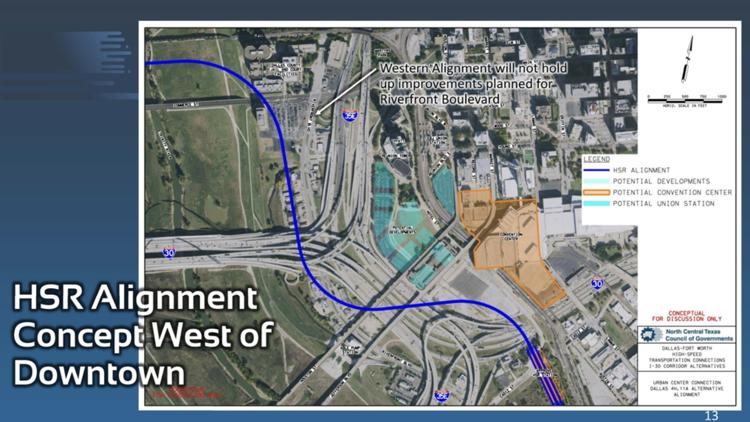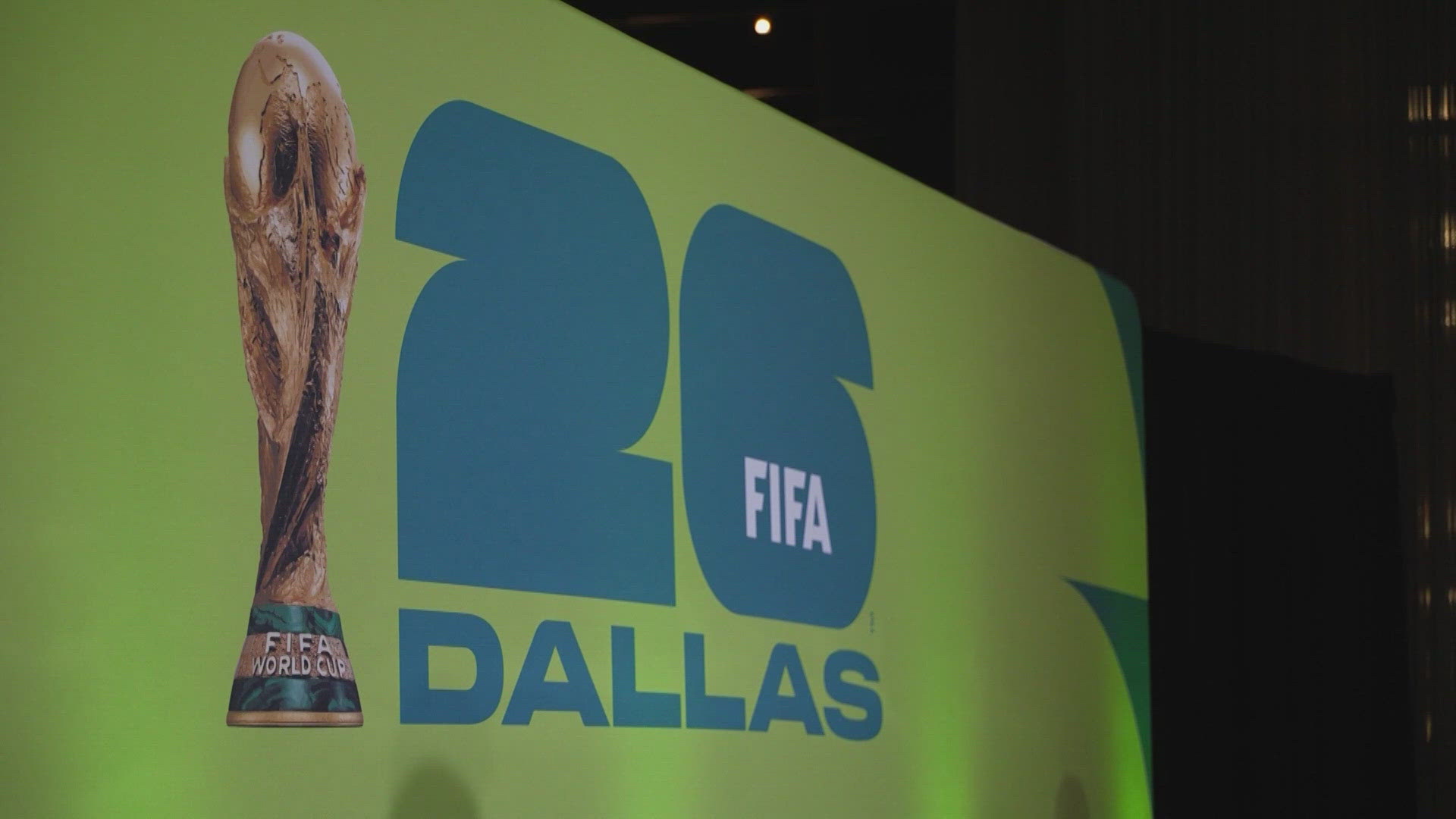DALLAS — Read this story and more North Texas business news from our partners at the Dallas Business Journal
The effort to connect Dallas and Fort Worth via high-speed train has taken a step forward.
The Regional Transportation Council on Aug. 8 approved roughly $1.65 million more to study an alternate route for the proposed train that would skirt downtown Dallas, after a previous rail route stirred controversy.
The RTC — an independent transportation policy group of mostly municipal and county government officials — approved the Surface Transportation Block Grant funding for the consultant team to study the route that would run west of downtown Dallas, between the Trinity River and South Riverfront Boulevard. The proposed route would then cut across Houston Street and I-35E to reach a station in the Cedars. About $12.1 million in STBG funds have already been approved for the project.
Next steps will also include bringing the western alignment to the same engineering design and planning level as the prior downtown alignment, advancing and reviewing opportunities in the National Environmental Policy Act process until a final decision is made and responding to an anticipated Amtrak concerns about shifting away from the downtown line option.
"We've heard through our conversation with Amtrak concern about moving away from the downtown option since that did provide pedestrian connections from an Amtrak high-speed rail station in Dallas and Eddie Bernice Johnson Union Station, two-thirds of a mile to the north," said Brendon Wheeler, program manager with North Central Texas Council of Governments. "We believe they intend to issue a statement or formal response to that effect. This action item is simply to request the ability for us to respond, whatever that statement may be."
The RTC also received a request from Dallas Interim City Manager Kimberly Tolbert to consider adding a connection to the Kay Bailey Hutchison Convention Center in either alignment options, said Michael Morris, NCTCOG director of transportation.
The new line was brought forth after some Dallas business leaders and government officials opposed a seven-story elevated rail line through the southwest portion of downtown. Dallas City Council on June 12 approved a four-month economic impact study of the elevated line through downtown.
Dallas City Council Member Omar Narvaez told the 45-member RTC that council members have approved the request-for-proposal for the economic study and aim to have the report completed in October.
"We will have discussions amongst ourselves and our body and do what is best for the city of Dallas," Narvaez said. "But leaving two options open for us so that we can get this right is the best thing to do as we get that economic impact study. Then we're going to have all the data that we need in order to make a good decision so that we can continue along with high-speed rail."
The high-speed rail project between Fort Worth and Dallas has been years in the making. The train would run from an underground station in Fort Worth, make a stop at another underground station in Arlington before heading to Dallas. It could then connect to another high-speed rail line that runs to Houston.
Supporters of the project said it’s needed to ease highway congestion as population in the Metroplex is estimated to increase from 8 million to 15 million by 2050, according to estimates from NCTCOG.
But the Dallas portion raised concerns among public and private sectors who worried it could negatively impact projects such as the redevelopment of the convention center. Additionally, Dallas-based real estate firm Hunt Realty Investments Inc. sounded alarms that the elevated line could disrupt its proposed $5 billion mixed-use development near Reunion Tower and the Hyatt Regency. Hunt Realty Investments President Colin Fitzgibbons previously referred to the elevated route as an "an ugly scar that would tear apart neighborhoods."
The train would fit into the bigger high-speed rail network planned to extend to Houston. With an estimated cost of more than $30 billion, the larger rail system could connect the two metropolitans via a 90-minute train at speeds reaching up to 200 miles per hour.



